Aratrik Dev Varman is many things: founder of Tilla, the Ahmedabad-based design studio; an advocate of handmade Indian textiles and traditional craft; and a cross-disciplinary designer who believes “good design can be useful in more than one context if adapted well”.
But when I get him on the telephone a day ahead of his AD Design Show debut, where he’s launching Painted Forest, his first wallpaper collab with Nilaya by Asian Paints, he likens himself to a tortoise. “Once I start something, I keep at it slowly and steadily; nothing has ever really gone out of the window or stopped.”
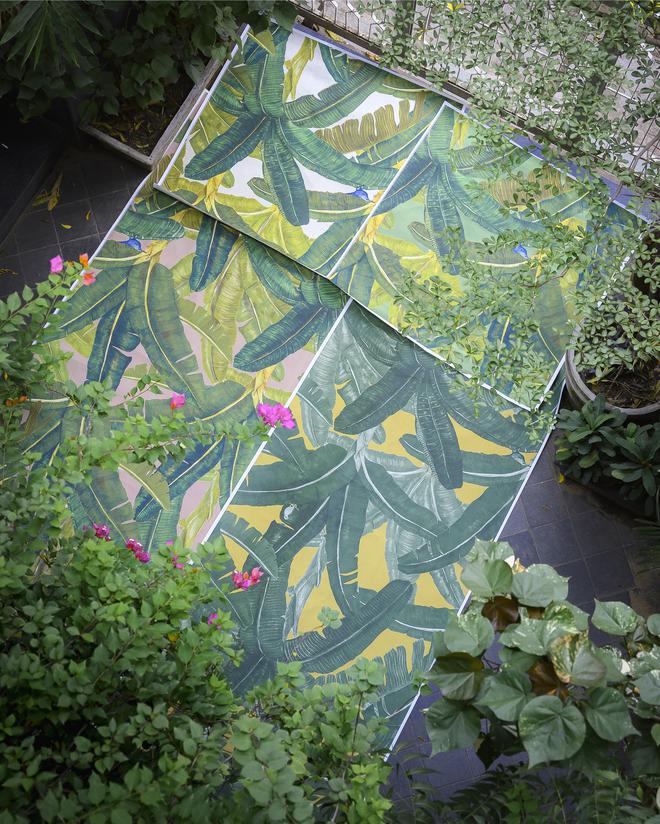
The truth of his words lies in the source of his inspiration for Painted Forest — Tilla’s The Wild Garden Project, which started all the way across the country in 2016, at Amethyst’s Wild Garden Cafe in Chennai. “There was no fixed project in mind at the time. I loved the garden and I sketched there with my friend and illustrator Jisha Unnikrishnan,” says Varman, 43. “When we showed our drawings to Kiran [Rao, the owner], she said, ‘Why don’t I commission some wallpapers from you,’ and the first monochromatic Wild Garden Panorama was born.”
In a sense, this is also the story of how a design evolves. A year or so later, Tilla did an iteration in colour and expanded it to a collection of notebooks and art prints, then printed it on textiles and made cushion covers and drapes. “We reinterpreted it slightly every time, for each different medium, and it grew into a project of its own [called The Wild Garden Project as an homage to Amethyst]. But the theme remained true to the original intention. It stayed botanical, and the style of drawing and colouring was always naturalistic.”
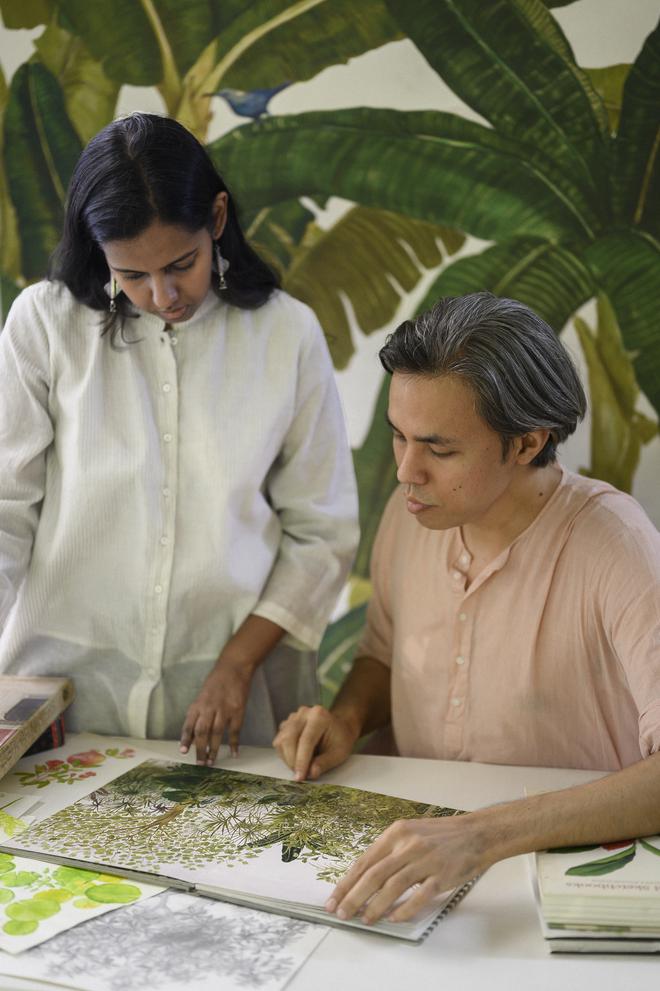
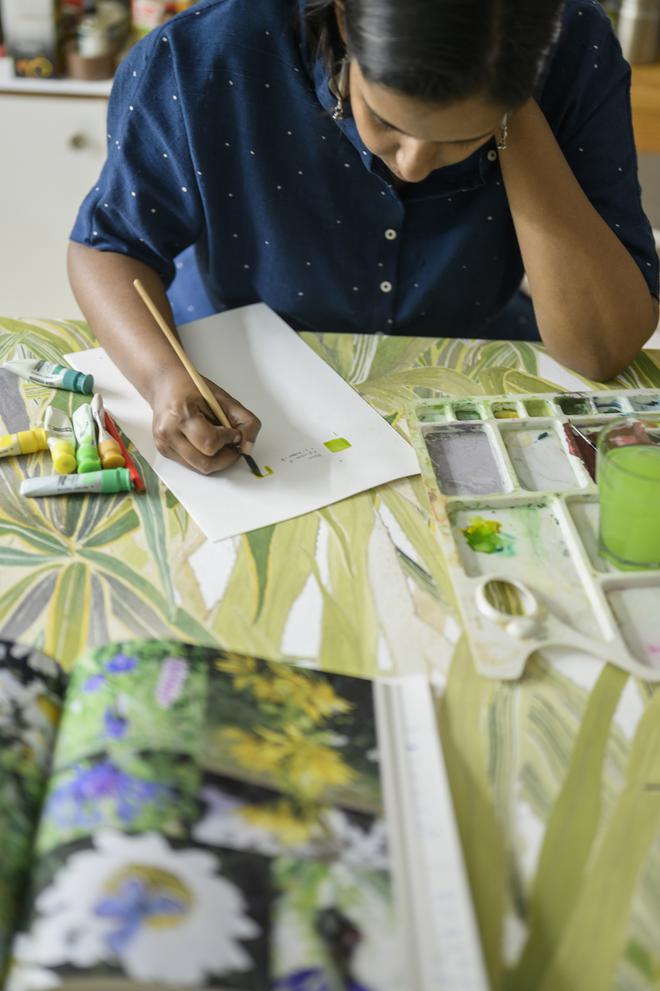
Jackfruits and toile de Jouy
The collection of nine prints is part real and part fantasy. “To the lush, tropical panorama set against a gentle monsoon sky, Jisha added plants and trees from her childhood in Kerala, like the traveller’s palm, the frangipani and the jackfruit, and the saptaparni from Ahmedabad. We also added animals and birds like the langurs that frequent our studio. Kiran suggested the storks because we have a pond in our drawings.”
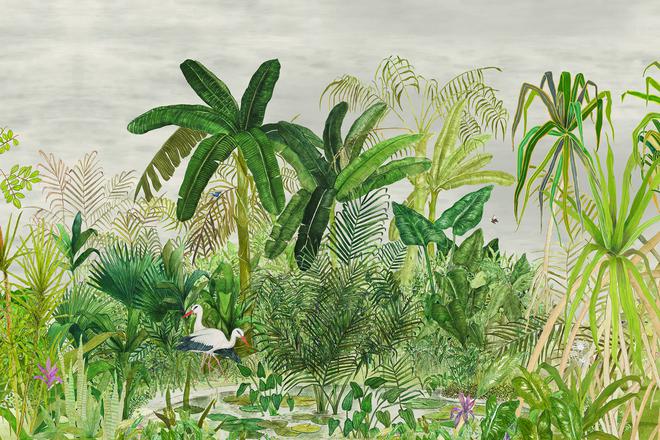
While Nilaya approached them on the basis of The Wild Garden Project, Varman decided to go all in by experimenting with the form, too. “A layer that we added in the Painted Forest that wasn’t there earlier was global references, from the magnificent dreamscapes of Henri Rousseau to Japanese wood block printing. There’s a series inspired by French toile de Jouy textiles, where we painted individual vignettes of traveller’s palms and jackfruit trees with langurs creeping out from behind them, and placed them more like clouds in the sky.”
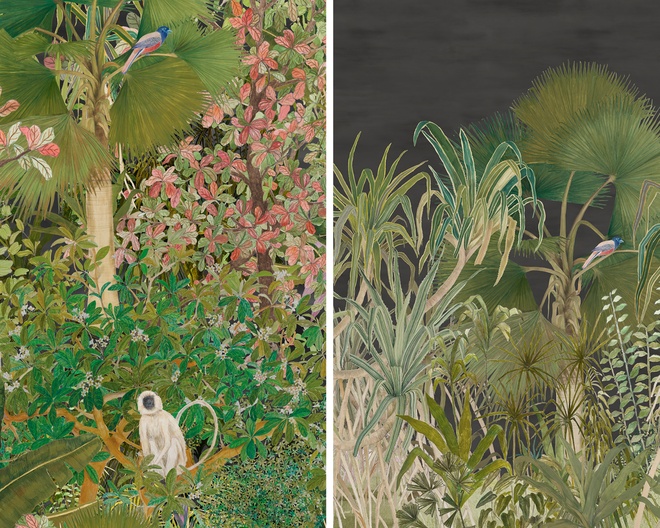
There’s also references to the famous Martinique design of the 1940s, which is a lush banana leaf pattern. “We thought, why not do our version of the Martinique?” says Varman with a laugh. “And for the Japanese woodcut series, we treated the fan palm in that style.”
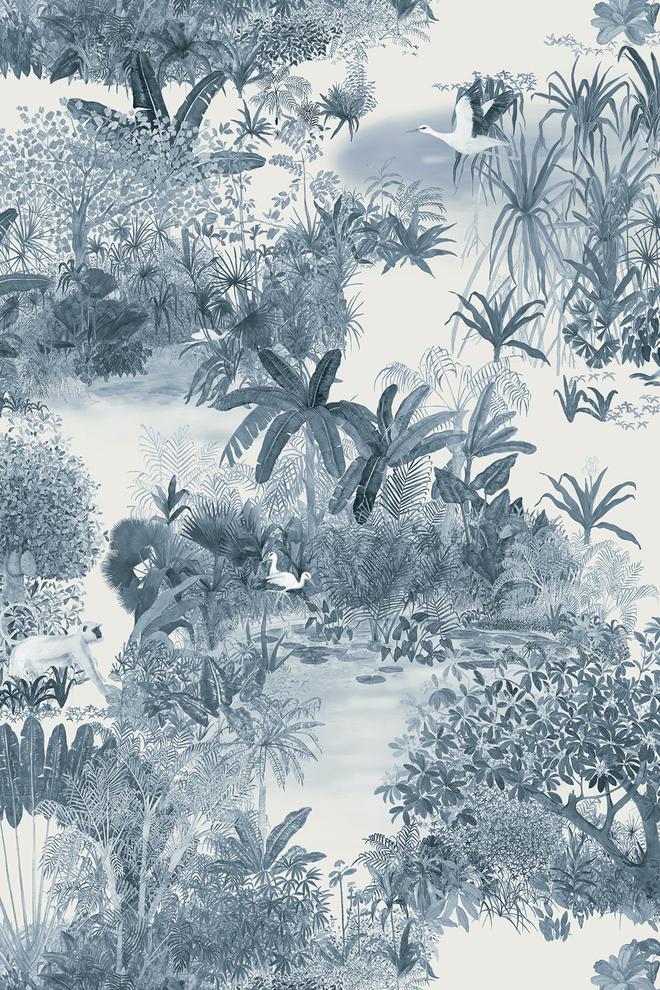
But through it all, they never succumbed to stylising anything. The patterns are all hand-drawn and coloured using a range of mediums such as watercolour, gouache, mixed media, and pencil, and then digitally printed. “It’s been four months in the making, from assembling the drawings, testing them for scale, overcoming constraints of paper types and sizes, and setting repeats, to printing it. We are offering them as 90-foot-long rolls,” he says, adding that Asian Paints, with their expertise in production and distribution, has helped Tilla industrialise a product that started off as a hand-painted studio product.
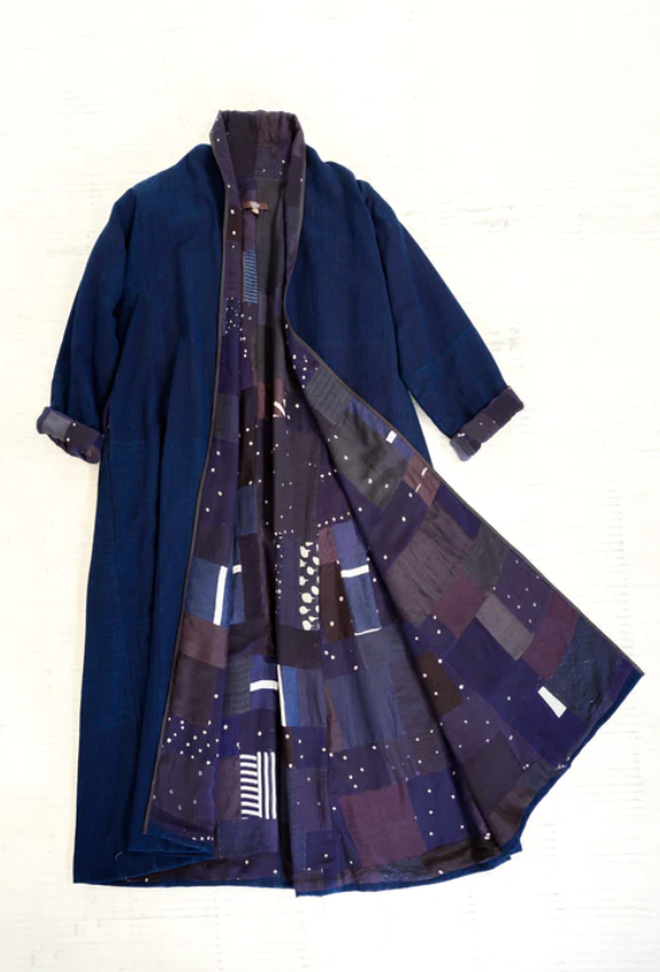
Completing the circle
Balancing creativity and efficiency
But the Painted Forest may not end up just on walls. Varman believes good design is versatile, and many of his earlier work, including installations such as 7 Indian Trees (artwork showcasing the silhouettes of trees ubiquitous to the Indian landscape such as neem, gulmohar and mango) have crossed over into other interpretations. A lot of the line drawings from The Wild Garden Panorama from Amethyst, for instance, were printed in gold on silk and made into jackets and other garments.
“When we talk about introducing efficiency into the design process, all of this ties in with the newer philosophies that people have been talking about, such as slow design. It would be a shame not to make the most of something you have,” says Varman, who is currently in the midst of finishing another cross disciplinary project — bringing his prints to a dinner set. “If it has the potential, why not diversify it, adapt it?”
One for the risha
AD Design Show is on till September 17.
surya.kumar@thehindu.co.in







